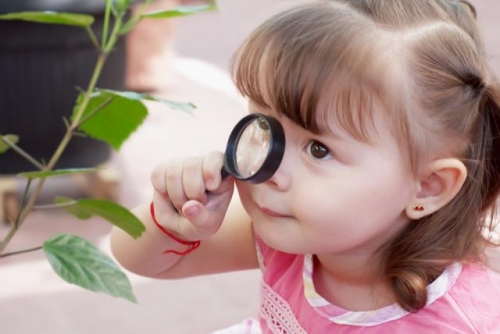Lesson 1: Why do we observe?

Learning Outcomes
Upon completion of this lesson's material, students will be able to:
- Explain the importance and purpose of observing and recording in the field of early childhood education
- Explain why confidentiality and eithics are critical when observing and recording
- Discuss ways observation tools can be used to connect with families
Teaching
Read the introduction in Week by Week textbook (pg 1-22)
Why observing and recording?
You may be most familiar with observing and recording as a method to assess children's development. While this is a major purpose, I encourage you to think of all of the other ways observation can be used.There are many other reasons why teachers choose to observe children. The first most important reason is for safety! Other reasons include physical health, getting to know the child (being present as it is called in your Powerful Interactions text later on in the program), helping the child, curriculum planning, documentation, sharing factual information with families and more. For this course, you will explore different observation and recording techniqes to inform your decision making throughout your day as an early childhood educator.
When observing and recording a child's behavior, growth, and development it is important to chose an observation tool that is most appropriate for the area of development you are addressing. The observation should also be conducted in a natural setting, during a typical daily activity and should not intrude upon the children's learning.
Of major importance, you MUST be mindful of confidentiality and the code of ethical conduct. Observations techniques can be informal but need to be handled in a respectful way that does not disrespect the rights of the child or the family. In some cases, an observation can include another staff member and their privacy is of equal importance!
Within the NAEYC statement of Ethical Conduct you will find more language about confidentiality. Please note all of the ways observing and recording can be related to these sensitive topics.
https://www.naeyc.org/files/naeyc/file/positions/Ethics%20Position%20Statement2011.pdf
Where will I be observing?
Throughout the semester you will be completing a number of direct observations of children. The locations for these observations may include: family childcare homes, Head Start preschool classrooms, public school preschool classrooms, childcare centers, Educare, etc. There is a list of local centers and contact information in the Contacts folder in BlackBoard. Please call your site or make an appointment to make the arrangements for your observations.- Professionalism and confidentiality are key components of proper behavior for a person who works or volunteers with young children.
- Staff and volunteers should dress appropriately. You should wear clothing that is comfortable for getting down on the floor with children and getting messy. However your clothing should also be free of holes, logos or disturbing images.
- Staff and volunteers should never discuss issues or personal information about the children in their care. The only exception to this rule is when parents have given permission for providers to share information with professionals who have been asked to work with the child, such as doctors or therapists.
- Please check with your site supervisor for their policy for volunteers.
- You need a PERMISSION FOR OBSERVATION form for EVERY child you observe. - This form is located in the resource folder within blackboard.
Assessment
Lesson 1 Quiz
- List five reasons why teachers should observe their students.
- Why is writing down the observation IN THE MOMENT important?
- What is a narrative recording?
- When should you observe children?
- Explain two major reasons why portfolios are important.
- What does objectivity mean?
- Describe how you keep confidentiality when recording your observation.
- As a STUDENT, what is your role as the observer?
- As a TEACHER, what would be your role as the observer?
- Why is it important to get permission from caregivers before observing a child?
Lesson 1 Discussion A
After reading the Introduction chapter, discuss at least one way observations can be used to connect with families (reference the text within the discussion) and how can they be used to overcome barriers with them?Lesson 1 Discussion B - The power of OBSERVING WITH PURPOSE
WITHOUT taking notes, watch the video below. AFTER the video is over:
- Write at least 5 activities you saw children doing outdoors in this video.
- Name at least 5 results of playing outdoors listed in the video.
Could you successfully complete each writing task?
NOW watch the video AGAIN and take notes while watching:
- Write at least 5 activities you saw children doing outdoors in this video.
- Name at least 5 results of playing outdoors listed in the video.
Write in the discussion if you noticed a difference. Were you able to get more information the second time when you took notes while watching (recording)?
For full credit in the graded discussions you need to post at least ONE response to the prompt in the Lesson and reply to at leaset TWO other students' posts. Your reply posts must be substantive. Please see the grading rubric in the Syllabus for this course for more details.
These instrucitons apply to all the graded discussions in this course and will not be repeated.